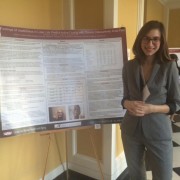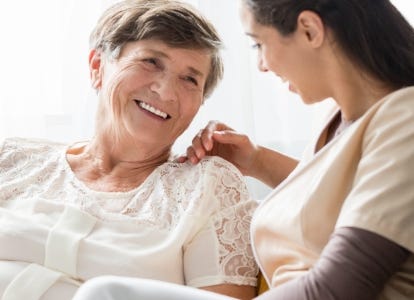Let’s Talk About Sex – After 60
Science has started to pay attention to what happens between the sheets after 60, especially as medical advances permit us to live longer and healthier lives. Emerging research shows that older adults get busier than we think, finding that many adults remain sexual well into their 90s. As with other periods of development, sex in later life improves quality of life, mood, and health.
The Problem
But sex after 60 still has its consequences. Spikes in sexually transmitted disease (STDs) among older adults illustrate that. Compared to younger folks, older adults know less about STDs, underestimate their risk of infection, and practice safe sex less often. Data from the Centers for Disease Control and Prevention (CDC) reflect this, reporting that adults over 50 represent 15 percent of new HIV infections. By 2020, upwards of 70 percent of persons living with HIV will be 50 or older. Other STDs including chlamydia, gonorrhea, primary and secondary syphilis, show similar increases in older groups.
What’s going on?
Experts offer two explanations: (1) Treatment advances, such as antiretroviral therapy, have enabled already infected adults to live longer, inflating prevalence; and (2) the number of new infections (incidence) among older adults is increasing.
Fine, but why are adults becoming infected at all?
Growth in new infections altogether means recognizing that sex doesn’t retire after 60. Complex interactions of biopsychosocial factors underlie the incidence of STDs among older adults.
Biological factors. With normal aging, older adults experience changes in immune function, increasing their vulnerability to sexually transmitted diseases. For example, the number and maturity of their T- cells—white blood cells that help fight infection—decrease, depressing immune responsiveness and aiding transmission. Systemic reductions in testosterone and estrogen can thin the vaginal and anal mucosae and reduce vaginal lubrication, leaving many older men and women susceptible to tears during sex that can facilitate viral entry.
Psychological & behavioral factors. Older adults underestimate their risk for contacting sexually transmitted diseases. A recent study comparing actual and perceived sexual risk found that older adults with the greatest risk of contracting STDs were also the group least aware of their vulnerability. Cohort differences surrounding the 1960s rise of penicillin to treat STDs like syphilis may skew older adults’ identification with risky sexual behavior, explaining low rates of condom use among boomers especially. The widespread availability of erectile dysfunction medications in a climate of shifting divorce and dating patterns in later life— when menopause hits and pregnancy ends— have intersected to create more opportunities for sex and infection.
Sociocultural factors. Of course, older adults aren’t entirely to blame. Stereotypes, taboos, and biases about aging and sexuality perpetuate misconceptions surrounding late life sex, trickling down into clinical practice. For example, physician-initiated sexual history taking remains suboptimal among older adults, despite CDC recommendations requiring patients of all ages to receive comprehensive STI/STD education and evaluation. A powerful study revealed that few men (38 percent) and even fewer women (22 percent) had discussed sex with a physician since age 50, consistent with findingsdescribing the inverse relationship of age and frequency of sexual health discussions. Other studies simply find that practitioners feel uncomfortable initiating sexual health discussions with older adults. Prevailing interpretations of these findings conclude that practitioners’ attitudes and beliefs about sex in later life may stem from stereotypes of aging and sexuality, rather than experiences with, or explicit education about, late life sexuality.
Where do we begin? A call to action
Sex researchers and educators alike have long pointed to the positive contributions of sex education to healthy sexual attitudes and behavior, but adult specific models remain breathtakingly scarce. Psychologists must therefore work to develop, implement, and evaluate adult sex education protocols for practitioners and older adults on:
- Increasing knowledge about sexual health and functioning, as well as their changes, in later life;
- Growing understanding of the biopsychosocial contributions to sexual risk in older adulthood; and
- Promoting growth in physician and patient comfort to discuss sexual concerns
Recent precedent supports this as a good starting point: internal medicine residents who received three brief 30-minute tutorials on sexual history taking demonstrated improved documentation of older adults’ sexual histories than those who did not.
Steps you can take right now
We’ve got a long way to go before the paradigm shifts. Here’s what you can do to nudge it:
- Pause to assess, recognize, and reflect on your biases. What attitudes and beliefs do you have about late life sexuality? Where do they come from and how do they serve you? How and why should you challenge them?
- Practice the kind of sex you’d encourage your child or loved one to have. Sex that’s safe, consensual, and well lubricated.
- Have the knowledge and courage to ask questions. If you’re a health care provider working with older folks, ask about their sexual concerns; research says adults appreciate it. If you’re an older adult, share your sexual concerns with your health care provider—a competent professional will work with you or direct you to someone who can.
- Learn more. Explore the references included throughout this piece to get more (scientifically sound) information.
Embrace sexuality as a lifelong, developmental process that improves with age.
Isn’t that more fun, anyway?
Listen to Aging Literacy Podcast Episode One: Sex Over 60 with blog post author Christina Pierpaoli Parker, Dr. Bill Thomas and Nate Silas Richardson.
This article first appeared on changingaging.org.
Written by Christina Pierpaoli
About Christina Pierpaoli, ChangingAging Contributor






No Comments